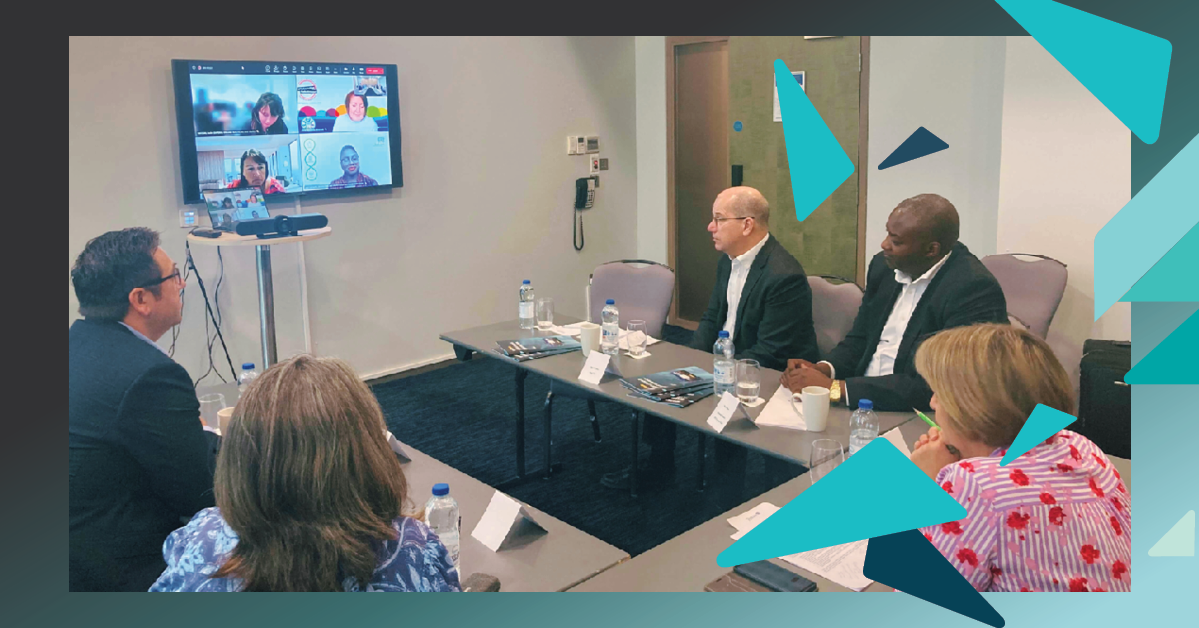How Could Technology Better Support Patient Experience in the NHS?
6 minute read | 09/11/2023

SPARK® TSL held a private roundtable with a patient experience & engagement focus. NHS delegate's gathered in Birmingham in September where patient experience leads from six NHS trusts voiced their priorities. Here, SPARK® TSL gleaned information which will help shape their products based of staff feedback.
The NHS exists to serve patients. But more could be done to make their experience a key focus when it comes to technology adoption, states one of the senior NHS delegates.
Sustained challenges faced by clinical teams on the frontline of an NHS under pressure are well documented in daily headlines. Staff are managing huge demand with finite resource, with significant impact for their own health and wellbeing.
But ongoing pressures also directly affect how patients experience services. Further insights into the specific challenges faced and the potential for utilising technology to enhance patient care are discussed below, drawing from the valuable feedback gathered during the roundtable.
- Patients Feeling the Pressure – People are More Fragile
- Light at the End of the Tunnel
- Technology Already Helping the Patient Experience
- Joining up Diverse Tech – Involving Patients, Building Libraries, Making Tech Accessible
- Conclusion of the Roundtable
Patients Feeling the Pressure – People are More Fragile
To understand how patients are feeling, it's best to hear from the experience of the healthcare professionals themselves.
“It is always the patient left suffering when appointments are cancelled, with ever increasing waiting lists,” said delegate Micah Matore, the Patient Experience Lead at Bedfordshire Hospitals NHS Foundation Trust in his opening comments.
“The NHS is under a lot of pressure,” he said. “And patients and families are the ones that end up feeling it the most.”
Matore’s comments were echoed by colleagues. Caroline Heason, head of Patient Experience at Oxford University Hospitals NHS Foundation Trust, said that patients faced an “increasing complexity of physical health conditions” and reflected on changes in “people’s resilience to be able to cope”.
Many patients now had to manage “mental health problems, their families’ ability to cope, and the cost of living crisis on top of that”. Various factors combined were “making people feel very fragile”.
Light at the End of the Tunnel
Amidst the complex challenges facing the healthcare system, healthcare professionals recognise the pressing need for collaborative, innovative, and technology-driven solutions to enhance patient interactions within the NHS.
With challenges around finances, fewer GPs and community services available, and growing numbers of patients, Alison McCrudden, Head of Patient & Family Experience at Lancashire Teaching Hospitals NHS Foundation Trust, said opportunities to improve how patients interact with the NHS rested in collaboration to give patients “a clear structure of where they can go when they need help”. “We are doing collaborative working within Lancashire and South Cumbria with partners, trying to make sure we give patients a better experience,” she told delegates.
Annette Agetue-Smith, Associate Director for Patient Experience and Engagement at Mid and South Essex NHS Foundation Trust, concurred that tight finances combined with increasing complexity required new approaches. “It is tough, but there is light at the end of the tunnel,” she told the event. “We are bringing in more diverse conversations. Previously we wouldn’t be meeting with SPARK® TSL or the hi-tech AI industry. We are doing things differently and will come to see improvement as a result.”
Rachel Watson, Head of User Insights and User Experience Design at Imperial College Healthcare NHS Trust, said innovative work was needed to reflect modern patient needs. “Society has changed a lot in the last 10 years,” she said. “People’s expectations are slightly different and there is a huge focus on equity within the NHS. We need to start thinking radically different around how we approach problems.” Technology has a role to play, she insisted.
Technology Already Helping the Patient Experience
In the realm of healthcare, technology is proving to be a transformative force in enhancing the patient experience, with innovations spanning from virtual reality interventions to streamlined communication methods, as articulated by healthcare professionals in various NHS Trusts.
In Mid and South Essex “technology has really helped to drive the patient experience”, said Agetue-Smith. “We have been looking at virtual reality in supporting patients with mental health conditions, autism, dementia and with children: giving them a virtual experience of what a procedure is like. We are trying to think outside of the box.”
Patient portals to help bring “autonomy to patients”, a need for “systems that talk to each other” to ensure timely patient assessments, and opportunities to use technology to improve patient engagement before the complaint process, is part of the focus at Bedfordshire Hospitals, said Matore.
From robotic surgery that can cut down theatre and recovery times, to video on demand services that help to make translation services accessible to different communities, McCrudden also said that technology “really helps to streamline services”.
Alison Greene, Patient Experience & Management matron at Barts Health NHS Trust, added that “some of the simple things that came through Covid have really helped.” “There had been a push for virtual appointments,” she recalls. “Some said, ‘oh no, we can’t do it’. Then suddenly we could.”
Watson said technology is having significant impact as a tool for patient communication. “We have used text messages to communicate with patients, so it is not radio silence as they wait to be seen by the right person,” she said. Efforts had been made to “give patients the tools to provide self-help”. “There is something around logging preference for patients – do they want a face-to-face appointment, do they prefer online, do they need large font, how can patients tell us they no longer need the appointment? That can all help.”
Joining up Diverse Tech – Involving Patients, Building Libraries, Making Tech Accessible
Amidst the influx of diverse healthcare technologies, the vital challenge lies in structuring their accessibility to patients while emphasising the importance of human engagement in this process
“It's the connections with real-life people who have to pick it up and use it that really needs consideration,” said Watson. “The resource is often not identified to work that out.”
Agetue-Smith said she needed to keep asking “where is the patient voice” as digital programmes are delivered. “The agenda for patient experience needs to be challenged at every step of innovation,” she said. And she said ageing NHS estates and infrastructure required updates “to host the technological advances we are talking about”.
Matt O’Donovan, CEO for SPARK® TSL, agreed that the right infrastructure could place innovations into patients’ hands. Using libraries as an analogy, which cater for a large variety of people to make content accessible, he said NHS providers now have an opportunity to better embrace existing technology. WiFi tools and bedside monitors, for example, could help create a structure for patients to access tools that could improve their experience.
“We could have 30 cool apps that could make a difference to lives,” he said. “But how can we deliver those apps to patients? We need the right infrastructure in place to deliver fantastic innovations. You need someone to glue all that together, so the data is accessible.”
Immediate quick wins from this approach excited delegates. Screens could allow patients to not only watch Netflix but to “access their information, carry out surveys like Friends and Family tests, order meals, feed information back to a PAS, or embrace another new app tomorrow that does something even better”, said O’Donovan.
James Morriss, Managing Director for SPARK® TSL, described how one hospital is already using the company’s WiFi splash screen to signpost patients to information tools including the Patients Know Best app. “We are really hoping we can supercharge the usage,” he said.
At another hospital, 500,000 patients use the company’s WiFi splash screen, which could create huge potential to direct them to helpful apps and accessibility tools, he said.
Conclusion of the Roundtable
The roundtable heard that hospitals now have the ability to make more of their WiFi toolset. They can use this to engage with patients when they arrive at hospitals, or when they are in a hospital bed via existing bedside units, also supported by SPARK® TSL. Or they could use iPads and tablets, which could also be used by patients after discharge. Patients could be signposted to appropriate applications within a library style infrastructure.
The opportunity: to help busy providers overcome deployment obstacles, and to activate patients to engage with digital tools and information that can stimulate important participation in healthcare.
About the author
Rebecca O'Donovan
Becky is the Marketing Director at SPARK TSL, of whom she has worked for since 2012. She is responsible for high-level marketing strategy focusing on lead generation and aiding the vision of the business to ensure business growth.
More articles by the author
Related articles
 Company News
Company News
UHNM NHS Trust work celebrated with article in the Guardian
In association with Media Planet and Digital Health, WiFi SPARK and University Hospitals North Midlands NHS ...
 Healthcare Industry
Healthcare Industry
How WiFi Can Help Reduce Patient Complaints in Healthcare
By 2019, it will be compulsory for all NHS Trusts to offer free WiFi to patients. Digitalisation is one of ...
 Healthcare Industry
Healthcare Industry
Supporting Healthcare Innovation at Stepping Hill Hospital
As part of our ongoing mission to transform the healthcare experience for both patients and staff, SPARK TSL ...


